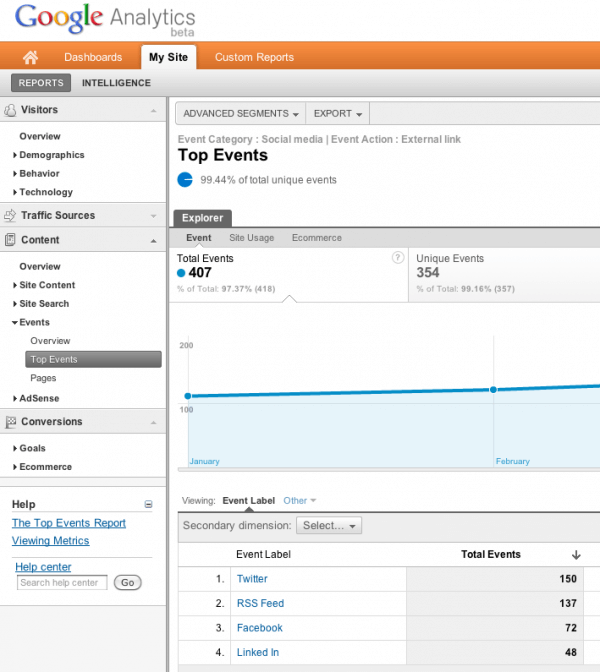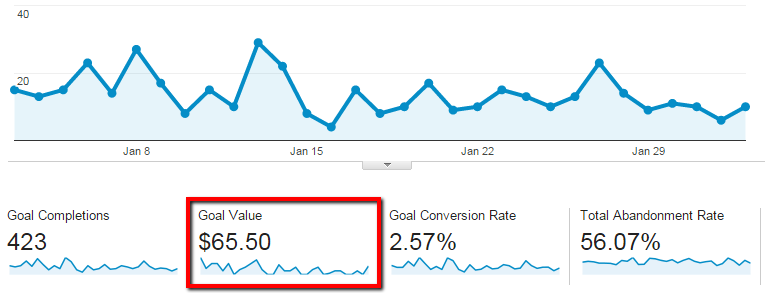What Data Is Google Analytics Goals Unable to Track: A Complete Overview
What Data Is Google Analytics Goals Unable to Track: A Complete Overview
Blog Article
Discover the Limitations of Google Analytics Goals: Introducing the Data Kind That Remain Untrackable
As businesses increasingly depend on data-driven decision-making, understanding the limitations of tools like Google Analytics comes to be paramount. While Google Analytics Goals deal important understandings into user interactions, there exist information types that thwart tracking, presenting difficulties to a detailed understanding of customer habits. These untrackable information types question regarding the accuracy and completeness of the analytics information that organizations heavily depend upon for their electronic strategies. Curious to discover the concealed unseen areas in your information analysis process?
Insufficient User Journey Tracking
Incomplete user trip monitoring within Google Analytics can hinder the capability to accurately examine user actions. When the user trip is not fully tracked, there are gaps in the data that prevent a comprehensive understanding of how users interact with a web site. This absence of insight can cause missed out on chances for optimization and renovations to the individual experience.
One typical issue with insufficient individual journey monitoring is the failure to see the complete path that customers take previously completing a goal or leaving the website. Without this info, it is testing to determine where users might be coming across challenges or friction factors that prevent them from transforming. Additionally, incomplete tracking can obscure the effect of specific advertising efforts or website modifications on individual habits.
To resolve this constraint, it is vital to establish appropriate tracking devices within Google Analytics to catch the entire user trip. This may involve setting up occasion monitoring, goal funnels, or making use of devices like Google Tag Manager to make certain that no important communications go unrecorded. By acquiring a detailed sight of the customer journey, web site proprietors can make more enlightened decisions to boost customer engagement and drive conversions.
Acknowledgment Challenges
Navigating through attribution difficulties in Google Analytics requires an extensive understanding of just how various touchpoints add to the general conversion process. Acknowledgment difficulties occur from the complexity of contemporary client journeys, where customers communicate with multiple channels before converting. Google Analytics provides various acknowledgment models like first touch, last touch, and linear, each using a various viewpoint on exactly how credit score is assigned to touchpoints along the conversion path. These versions might not always accurately mirror the real effect of each touchpoint on the conversion.
One typical attribution difficulty is the trouble in attributing conversions to the appropriate resource, particularly in instances where users interact with numerous networks before transforming. In addition, cross-device monitoring postures one more attribution difficulty, as individuals frequently change in between gadgets during their trip, making it testing to track their interactions seamlessly.
Offline Conversions
Given the challenges linked with associating conversions accurately in online networks, the measurement of offline conversions presents a significant possibility for online marketers looking for a more thorough understanding of their consumers' journey. Offline conversions describe actions that customers absorb the physical world, such as making acquisitions in brick-and-mortar stores or over the phone, going to occasions, or involving with printed materials - what data is google analytics goals unable to track. These conversions are critical for companies that run both online and offline, as they give useful insights into the efficiency of advertising campaigns throughout different touchpoints
Tracking offline conversions typically presented a significant challenge for marketing experts, as it was challenging to attach these actions back to certain on the internet communications precisely. With improvements in innovation, such as the integration of CRM systems, special identifiers, and voucher codes, companies can currently bridge the gap in between online and offline data to obtain a much more all natural sight of client habits. By effectively determining offline conversions, marketers can enhance their techniques, assign sources much more successfully, and eventually boost the total client experience.
Cross-Device Monitoring
Cross-device monitoring plays an essential role in recognizing the interconnected nature of consumers' electronic interactions across numerous devices. In today's omnichannel world, where users seamlessly switch over between tablets, desktop computers, and smartphones, tracking look at these guys their actions throughout these tools is essential for marketers to get an extensive sight of their consumer journey.

Furthermore, personal privacy concerns and guidelines such as GDPR and CCPA have additionally complicated cross-device monitoring. With individuals requiring even more control over their data and enhanced constraints on tracking technologies, online marketers need to find privacy-compliant and ingenious methods to link user communications across devices.
Dynamic Content Involvement
Recognizing user involvement with vibrant content is crucial in enhancing electronic marketing strategies for enhanced audience communication. Dynamic content refers to web site elements that transform based on individual habits, choices, or various other variables, offering an individualized experience. Tracking individual communications with dynamic web content presents challenges for standard analytics devices like Google Analytics.
While Google Analytics can track standard communications like clicks and page sights, it might have a hard time to catch more nuanced interactions within vibrant material. what data is google analytics goals unable to track. Metrics such as time spent on details vibrant aspects, hover actions, or interactions within pop-ups are usually not conveniently quantifiable utilizing typical tracking approaches. This constraint hinders marketers' capability to fully realize how customers are involving with vibrant web content and customize their methods accordingly

Conclusion
Finally, Google Analytics goals have restrictions in tracking insufficient customer trips, associating conversions accurately, capturing offline conversions, tracking cross-device communications, and gauging vibrant web content involvement. These restraints highlight the importance of discovering added monitoring techniques and devices to get a more extensive understanding of individual habits and conversions beyond what Google Analytics can offer.
While Google Analytics Goals deal important understandings right into user interactions, there exist information types that thwart tracking, presenting obstacles to an extensive understanding of user behavior.Incomplete customer trip monitoring within Google Analytics can impede the capability to properly analyze user habits. When the discover this individual journey is not totally tracked, there are gaps in the data that prevent an extensive understanding of exactly how individuals interact with an internet site.One common problem with insufficient customer trip tracking is the failure to see the complete course that customers take previously finishing an objective or leaving the website. By acquiring an extensive view of the user journey, website proprietors can make even more educated choices to improve customer engagement and drive conversions.
Report this page